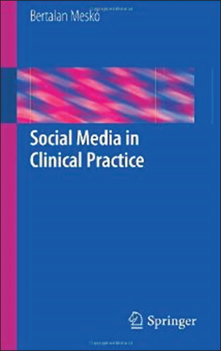
The issue of social media in healthcare has been frequently discussed since Health 2.0 appeared in the mid-2000s [1], and it has received ongoing attention ever since. Social media are web- and mobile-based digital communication tools used for interactive dialogues, forming communities, and supporting user-generated content [2].
In an article on the effects of social media on the healthcare field, Honigman [3] reported statistics and figures to describe the findings of the impact of social media on healthcare. The article reported that YouTube traffic to hospital sites has increased 119% year-over-year; this includes people communicating information with friends, family, or colleagues about the hospital and sharing videos. Thirty percent of patients who watched a video made an appointment with that hospital [4]. Although the report was based on the United States alone, this example clearly shows that social media play a role in the provision of health information and are increasingly being used as a marketing tool for the healthcare industry.
A review article examining the benefits and challenges regarding patients' use of social media tools reported an increased use of social media by patients in healthcare with benefits and promises; at the same time, it also described some limitations regarding social media's effectiveness [5]. Additionally, the availability of people's experiences and reviews of the care they have received on blogs, social networks, and microblogs, enables the novel possibility of analyzing these reviews via techniques such as natural language processing and sentiment analysis to detect quality of care [6].
Several articles have been published in Healthcare Informatics Research (HIR) regarding the development and use of mobile health applications for a variety of conditions, such as diabetes, coronary heart disease, and obesity [7,8,9,10]. In addition, a review article by Fernandez-Luque and Bau also looked at social media in healthcare on this issue of HIR [11]. Now is a good time in which to bring a book about the healthcare and information technology fields to the attention of HIR readers, allowing for a closer look at the issues regarding social media use in healthcare.
Social Media in Clinical Practice was written by Bertalan Meskó [2], a young physician with a PhD in genomics who graduated summa cum laude from the University of Debrecen in Hungary. As a self-professed medical futurist and geek, according to his Twitter profile, he is also a speaker, author, and consultant. With a mission to spread social media use in health, he actively runs a YouTube channel (The Medical Futurist, http://www.youtube.com/user/medicalfuturist) as well as a blog (http://themedicalfuturist.com).
To dip your toe into the social media waters, you can begin by watching an 8-minute video clip of Maskó's talk at TEDxNijmegen [12]. In this, Maskó emphasizes two points: 1) social media must be curated through crowdsourcing, and 2) digital literacy, including social media, must be in the medical curricula, which is certainly important for the education of healthcare professionals. To achieve his first point, Maskó founded a website, webicina.com, which provides curated health information across many specialties and conditions for patients and healthcare professionals by crowdsourcing from experts; this website has been mentioned in many media reports and a World Health Organization report [13].
To get yourself ready for digital literacy, you can read this book. As the author is a physician himself, the book's intended readers are physicians, medical students, and other health professionals; yet, it is very accessible for any consumers or patients who may also be interested in this area. With 17 chapters, links, and further reading lists that correspond with each chapter, it covers a wide range of social media tools and contents, including:
This is not a large book with great depth provided for each chapter's content; rather, within only 150 or so pages, it introduces sufficient information to stimulate further searches and reading on more advanced applications of social media in the healthcare field. The figures and tables also help readers understand the topics and issues, and Maskó provides a 'Self-Test' and 'Key Points' to summarize each chapter. The 'Next Steps' section at the end of each chapter operates as homework for readers to actively learn based on each chapter's content. Before getting into social media, some parts, particularly Chapters 1 to 3, might be too basic, so you may be bored if you are already familiar with this information.
As a reader of HIR, you may have greater knowledge than the author in this area, but you can nonetheless learn more from this easy-to-read book. Maskó also has another publication, The Guide to the Future of Medicine: Technology and the Human Touch [14], and you can experience his online course on social media, which features 16 presentations [15]. This information just might point you in the right direction of being the next futurist in the healthcare field.




 PDF
PDF ePub
ePub Citation
Citation Print
Print


 XML Download
XML Download